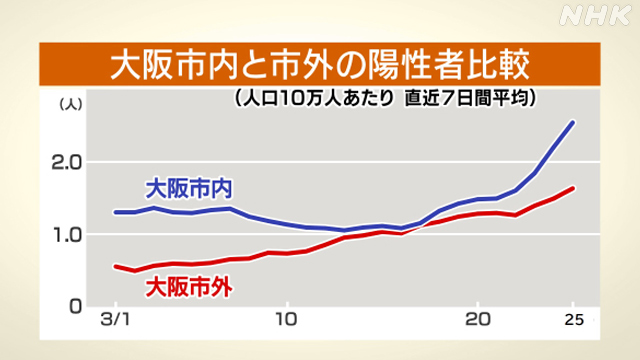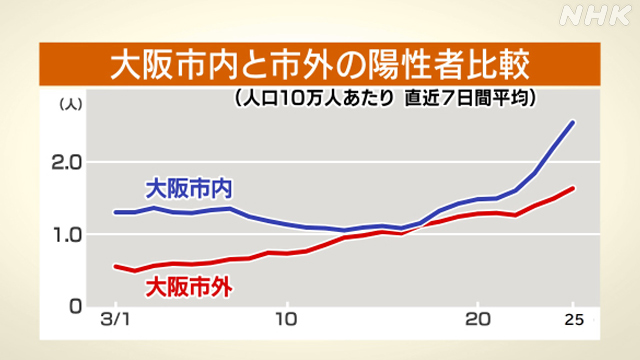 大阪「第4波に入った」感染再拡大 いったいなぜ?
大阪「第4波に入った」感染再拡大 いったいなぜ?
Osaka "Entered the 4th wave" Re-expansion of infection. Why?
Osaka Prefecture, where infection with the new coronavirus is spreading again. On the 29th, Governor Yoshimura announced that the infection of the new coronavirus had spread again in Osaka Prefecture and that he had "entered the fourth wave." Let's look at why the infection is spreading based on the data.
On the 26th of this month, Osaka Prefecture will extend the request for shortening business hours to restaurants in Osaka City until April 21st and will expand the target area to the entire prefecture from April 1st. I decided.
The decision to extend the time-saving request period and expand the area is due to the clear tendency for the infection to spread.

This is a graph showing the number of newly infected people in Osaka Prefecture from January.
After the state of emergency was lifted in Osaka on February 28, the number started to increase, and on March 26, there were 300 people. After that, there were 386 people on March 27 and 323 people on March 28, which is more than 300 people. On March 28, the number exceeded 313 in Tokyo, the highest number in Japan on that day.

This shows the newly infected people after March, divided into those in Osaka city and those outside Osaka city. Red is outside Osaka and blue is inside Osaka.
In the suburbs of Osaka, where no request for shortening the working hours has been issued to restaurants, we can see that the number has been increasing gradually since the state of emergency was lifted.
On the other hand, in Osaka City, where requests for shorter working hours have continued, the number of items that have been flat or declining has recently risen sharply.

One of the causes of the rapid increase in the number of infected people is considered to be the "mutant virus".
Osaka Prefecture has been conducting screening tests since January to investigate the actual situation of the spread of the mutated new coronavirus.
Since the subjects of the test include people with close contact with the mutant virus, Osaka Prefecture says that this ratio does not immediately indicate the overall status of the spread of the mutant virus, but the ratio is steadily increasing. I understand.
When we examined 10% of the 800 positive people for the week from the 14th to the 20th of this month, about 45% were mutant viruses.
At a meeting in Osaka Prefecture, Professor Kazunori Asano of Osaka University pointed out that "I feel that the number of mutant strains is increasing rapidly in the field. It is necessary to proceed with the analysis of the infectivity and pathogenicity of mutant strains." ..
In addition, the director of the Rinku General Medical Center's Center for Infectious Diseases, said, "In particular, the number of new positives in their 20s and 30s is increasing rapidly, and there is concern about the rapid spread of infection."
Source: https://www3.nhk.or.jp/news/html/20210329/k10012942361000.html
 English
English Japan
Japan
